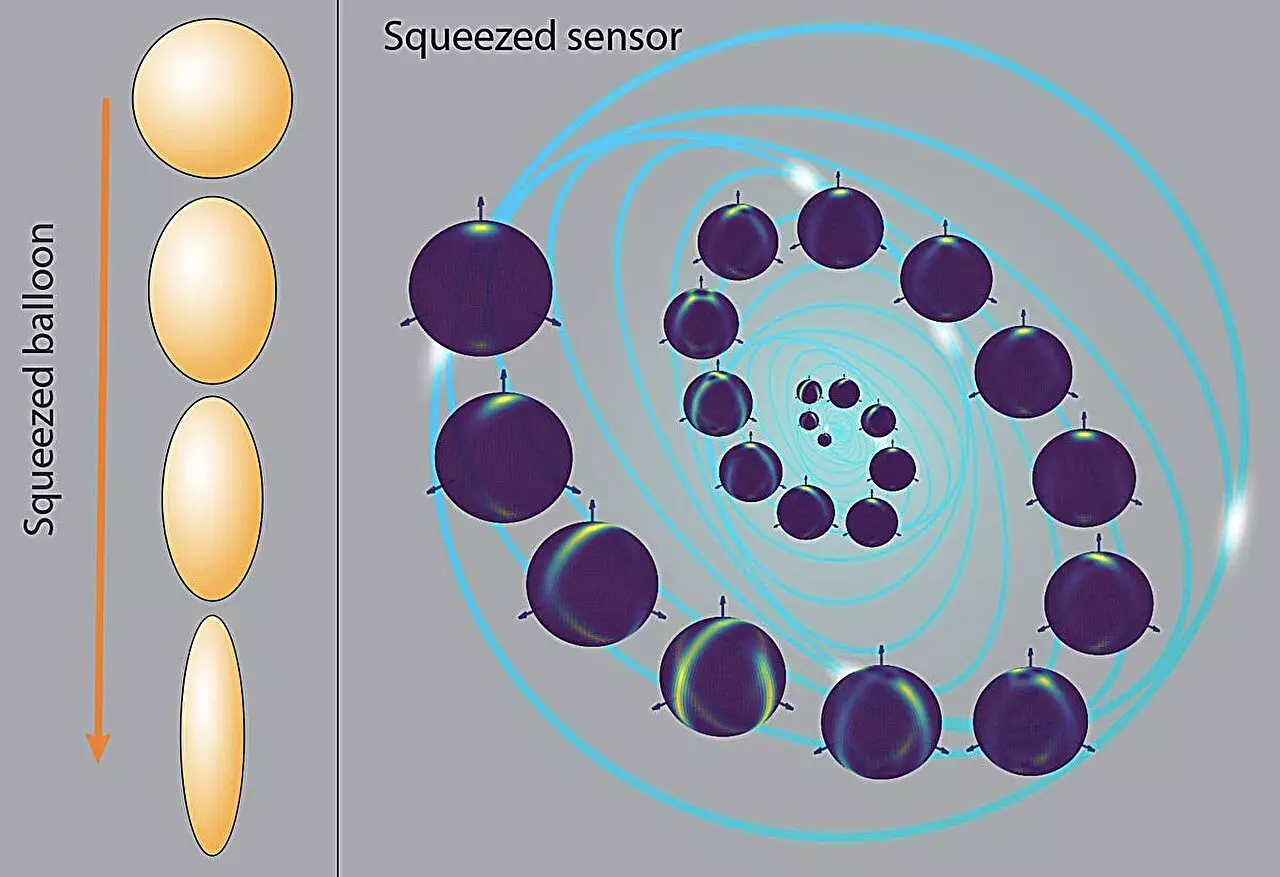Quantum squeezing represents a groundbreaking advancement in quantum physics that reshapes our understanding of measurement precision. At its core, quantum squeezing involves manipulating the uncertainties inherent in quantum systems. Think of a balloon: when uniformly inflated, it exhibits a perfect spherical shape, analogous to a quantum state with stable uncertainties. However, if you were to squeeze one side of this balloon, its geometry would shift, reflecting a state where uncertainty concerning one dimension—like position—is reduced, while uncertainty in another—like momentum—correspondingly increases. This phenomenon does not alter the total uncertainty but redistributes it, enabling higher precision measurements. Despite the fascinating implications, applying quantum squeezing in real-world scenarios presents formidable challenges, particularly when multiple factors need simultaneous assessment.
One of the most prominent applications of quantum squeezing is in enhancing the accuracy of measurement devices, such as atomic clocks. Currently, atomic clocks stand at the pinnacle of timekeeping, yet the quest for ever-more precise time measurement drives researchers to explore quantum squeezing techniques. By reducing uncertainty in measurements of specific variables, researchers can achieve unprecedented levels of precision. However, achieving similar levels of accuracy in scenarios requiring simultaneous evaluation of several variables, such as position and momentum, remains an uphill battle.
Dr. Le Bin Ho from Tohoku University recently published a paper in *Physical Review Research*, shedding new light on this pressing issue. His research offers valuable theoretical and numerical insights aimed at enhancing measurement precision when multiple parameters are involved. This quest is particularly vital as modern quantum systems often entail complex interactions that traditional measurement techniques struggle to address.
Dr. Ho’s study concentrates on how quantum squeezing can facilitate higher precision in environments characterized by multifaceted quantum measurements. He posits that understanding how to exploit quantum squeezing in multiple-phase estimation could pave the way for technological leaps in quantum sensing and imaging. The research outlines a framework whereby a three-dimensional magnetic field interacts with an ensemble of identical two-level quantum systems. In ideal conditions, measurements can achieve a degree of precision near theoretical limits. Nevertheless, previous studies struggled to clarify the mechanisms underlying this phenomenon, especially in real-world situations where entanglement only occurs in a single direction.
The implications of Dr. Ho’s research extend far beyond the academic realm. Improved precision in quantum measurements could revolutionize technologies across various sectors. In quantum imaging, the discovery could lead to sharper, more detailed images, whereas in quantum radar, it could facilitate accurate detection of objects, enhancing safety and navigation. Moreover, making atomic clocks even more precise could significantly impact global positioning systems (GPS) and other time-sensitive technologies, transforming industries reliant on exact measurements.
Dr. Ho acknowledges the extensive potential generated by understanding the mechanisms behind enhanced measurement precision. The findings of this research are not merely a theoretical exercise; they represent a stepping stone towards realizing next-generation quantum technologies. In fields such as biophysics, researchers could see monumental advancements in techniques like magnetic resonance imaging (MRI) and even enhance the sensitivity of biosensors designed for early disease detection.
Furthermore, as Dr. Le concludes, his future work will explore how these mechanisms vary across different types of noise, as well as approaches to mitigate such noise. This exploration is crucial for sustaining the momentum generated from current research. The continuous evolution of quantum squeezing is not only set to push the boundaries of scientific inquiry but also to transform practical applications. The path forward is both thrilling and expansive, suggesting that as our comprehension deepens, so too do the possibilities for innovation in quantum technologies.
The study of quantum squeezing encapsulates a pivotal area of inquiry that promises not just to enhance measurement precision but also to redefine the boundaries of scientific and technological achievement in an increasingly complex world.


Leave a Reply